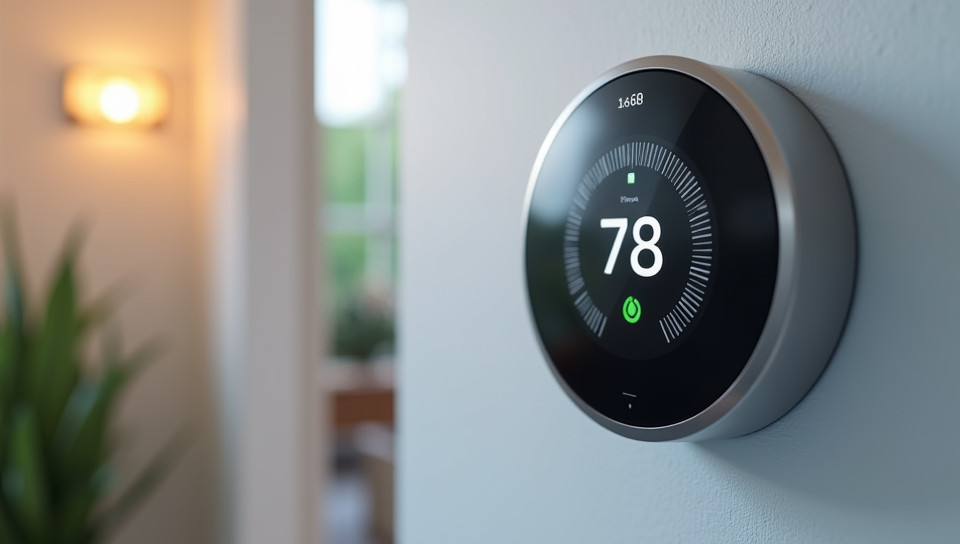Smart thermostats optimize heating and cooling efficiency 86%

Smart thermostats have revolutionized the way we control our heating and cooling systems, making it easier to optimize energy efficiency and save money on utility bills.
What are Smart Thermostats?
Smart thermostats are intelligent devices that learn your temperature preferences and adjust the heating and cooling system accordingly. They can be controlled remotely using a smartphone app, allowing you to adjust the temperature from anywhere. These devices use advanced algorithms to analyze your energy usage patterns and optimize the temperature settings for maximum efficiency.
Benefits of Smart Thermostats
Smart thermostats offer numerous benefits, including: - Improved energy efficiency - Reduced utility bills - Increased comfort and convenience - Enhanced safety features such as alerts for maintenance needs or potential system issues - Integration with other smart home devices to create a seamless user experience
How Do Smart Thermostats Work?
Smart thermostats use advanced sensors and algorithms to continuously monitor the temperature in your home. They can detect when you're not home, asleep, or away, and adjust the temperature accordingly. Some popular smart thermostat models also come with geofencing capabilities, which allow them to learn your daily routine and adjust the temperature based on your location.
Choosing the Right Smart Thermostat for You
With so many options available in the market, choosing the right smart thermostat can be overwhelming. Consider factors such as compatibility with your existing heating and cooling system, user interface preferences, and additional features you may need (such as humidistats or air quality sensors). Research different models, read reviews, and compare prices to find the best fit for your home.
Conclusion
In conclusion, smart thermostats are a game-changer when it comes to optimizing heating and cooling efficiency. By leveraging advanced technology and machine learning algorithms, these devices can help you save energy, reduce utility bills, and enhance your overall comfort. Whether you're looking to upgrade your existing system or install a new one, consider investing in a smart thermostat today and start experiencing the benefits for yourself.
- Created by: Pari Singh
- Created at: Aug. 12, 2024, 10:04 p.m.
- ID: 6897

